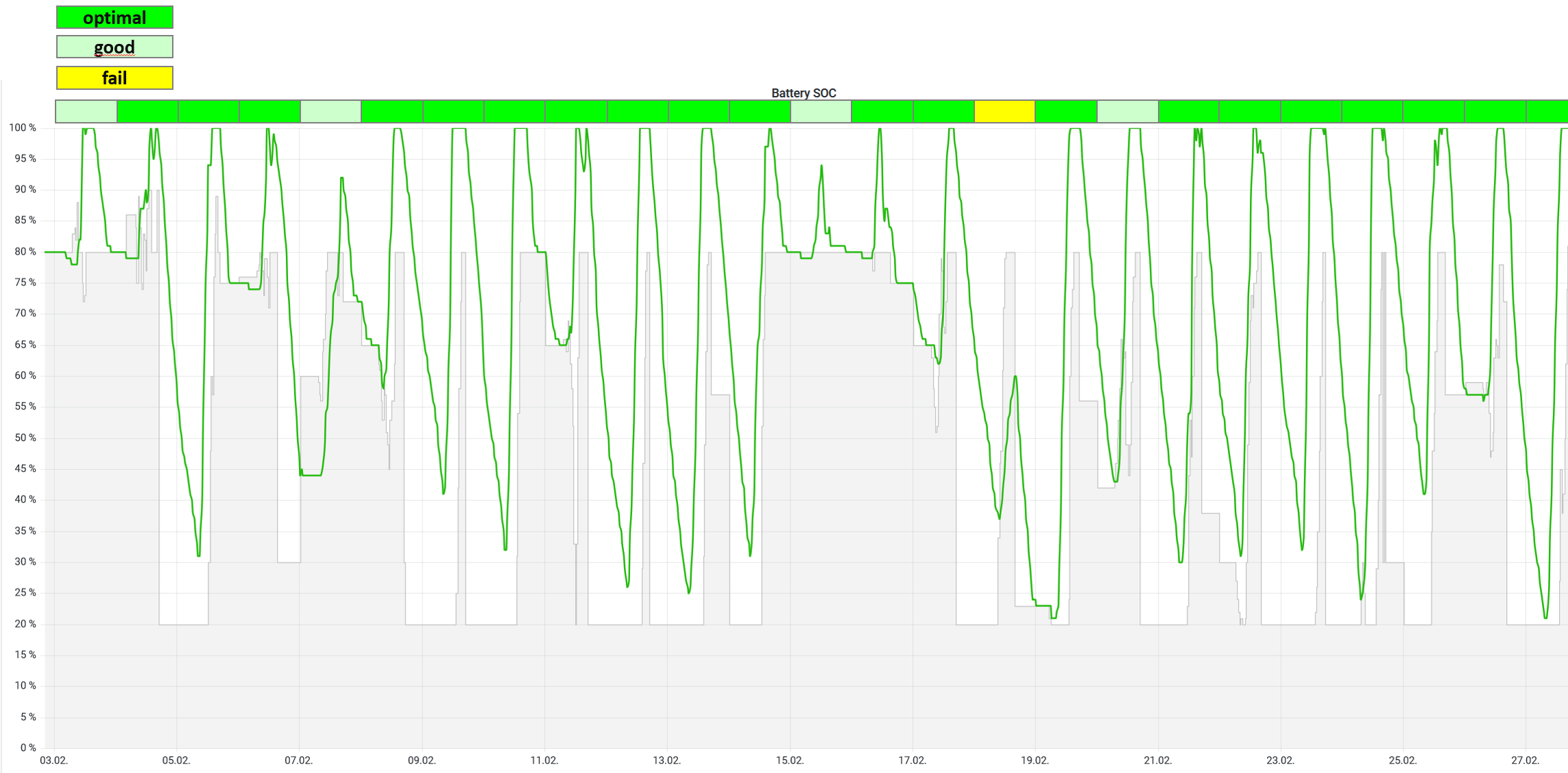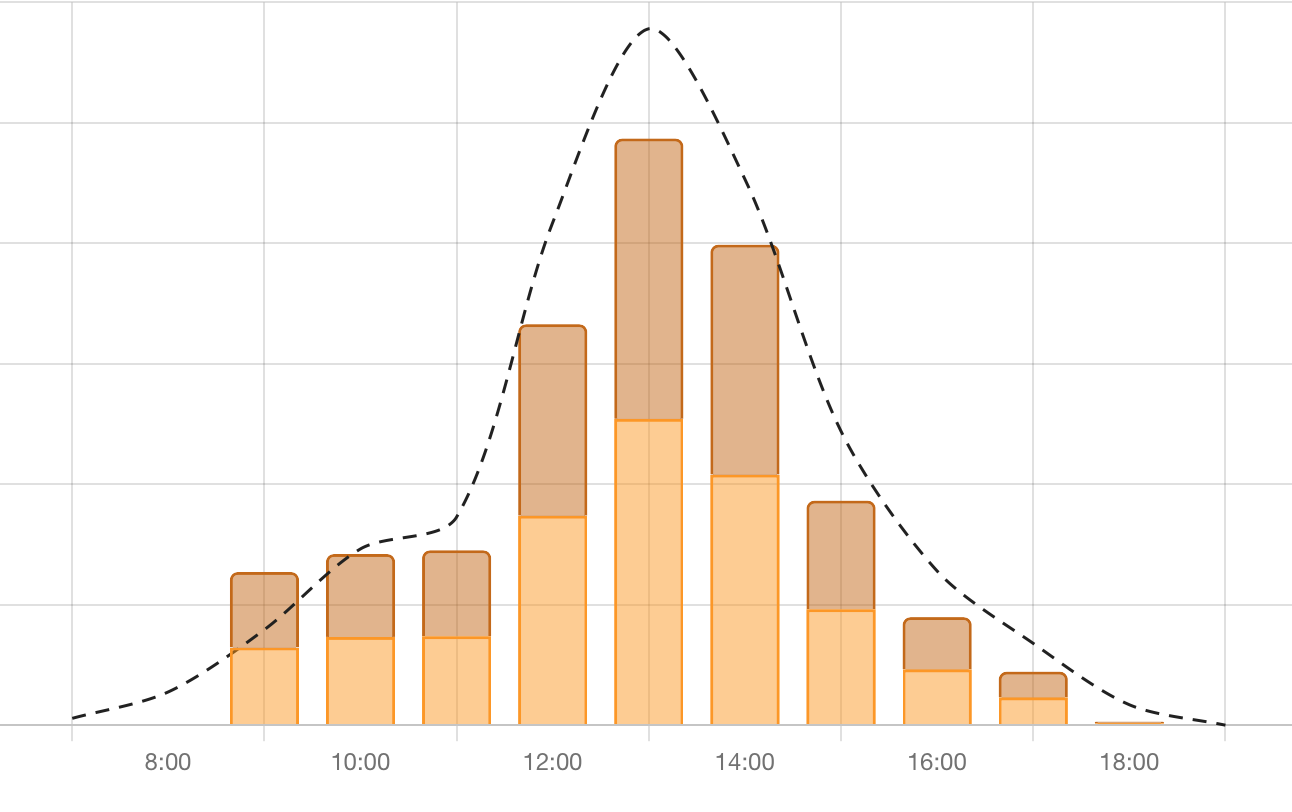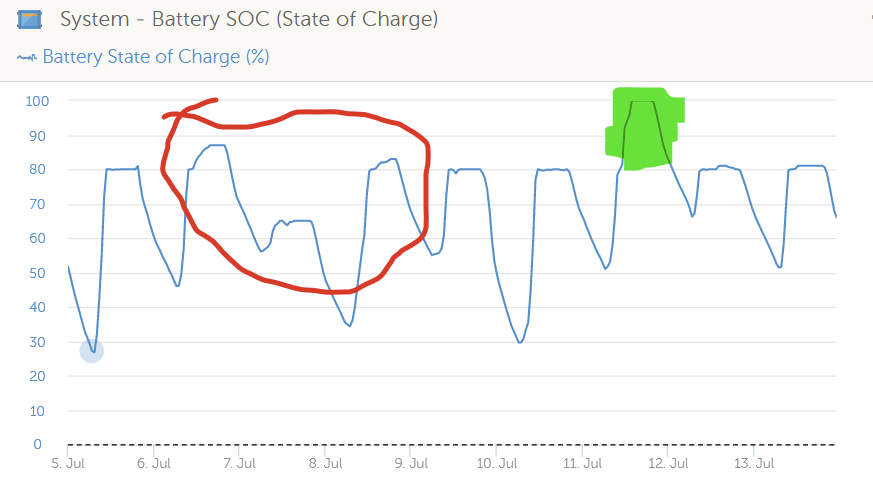LiFePo batteries show according to the study “Optimized Operating Range for Large-Format LiFePO4” the best lifetime, when the charge level is mainly used between 20% and 80%. Constantly loading a battery towards 100% is counterproductive (citation “It is worth to note that the large polarization at the EOC (SOC =100%) could result in poor rate performance of the LiFePO4/graphite battery and increased capacity fading at lower SOC regions”).
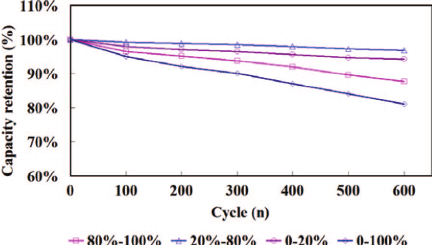
Source: “Optimized Operating Range for Large-Format LiFePO4/Graphite Batteries”
Some other solar manufacturers like e.g. SMA or Tesvolt have already provided a system enhancements, which allows a forecast-based battery charging in following context.
- Enhancing battery life
Keeping SOC shorter time at 100% enhances battery life. - Flexible battery charging
During shorter nights in summer it is sufficient for well dimensioned batteries to charge them only to 70% or 80%, where in winter it could make sense to charge them fully. - Improved PV power utilisation
In some countries a feed-in curtailment (i.e. not more than 70% of nominal peak power) does not let fully use the available PV power. Delayed battery charging prevents that constraint.
During year change I spent some time in elaborating some basics proving that such approach could be possible with minimal investment.
I established a forecast based SOC-limit control, which influences the battery control according to a PV forecast for the next 24 hours. With that prove of concept I can exemplify that controlling the SOC bottom level control can be implemented with less than 50 lines of code in node red. The top line control could be also easily implemented, in case victron solves a bug (which btw. currently is not considered to be corrected by Victron).
Compared to the standard batterylife option in VenusOS this approach does already allow a much more advanced battery usage.
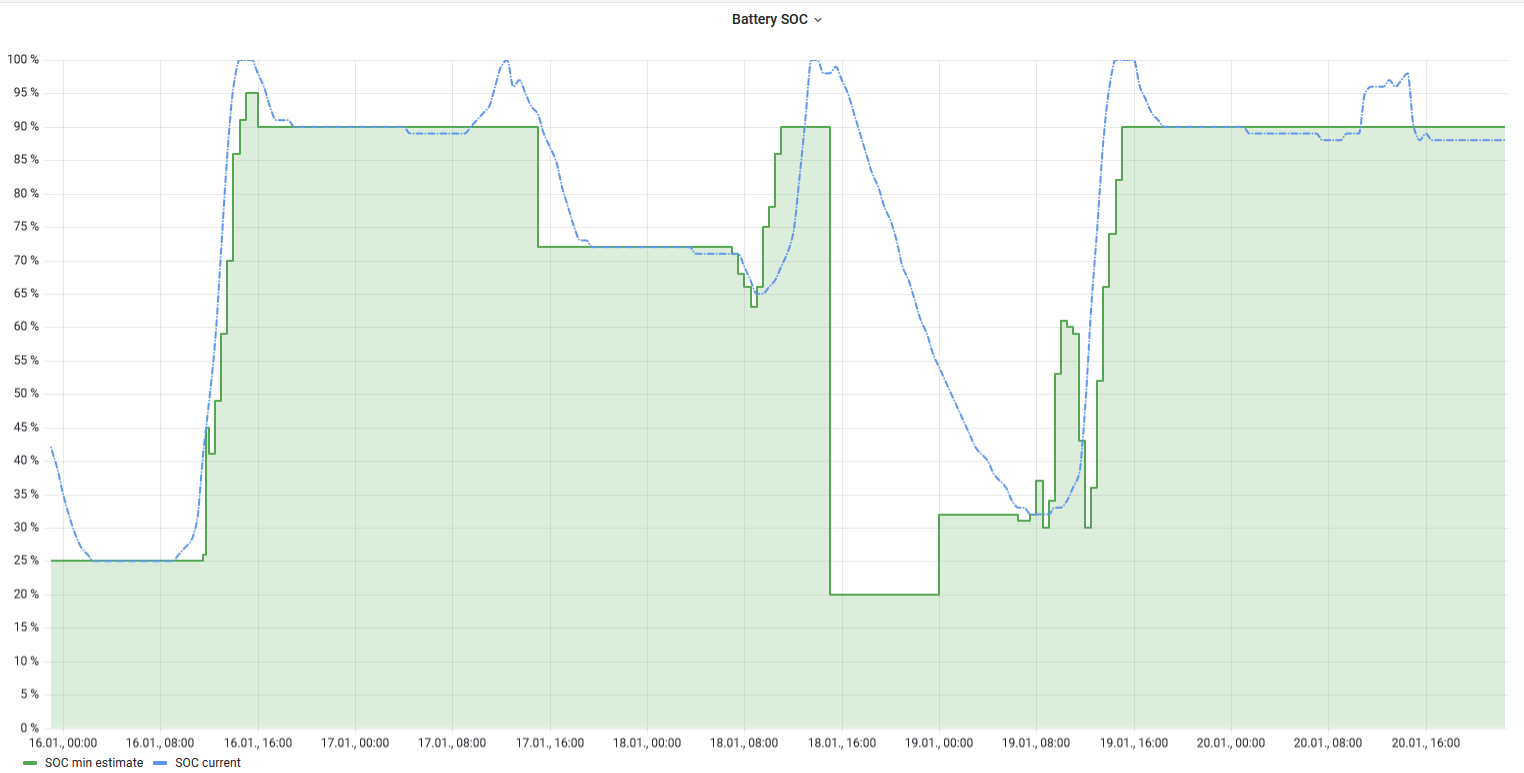
The diagram of the last 5 days shows that the prediction and the resulting SOC-adaptation worked more than reliable. I calculated the allowed Min-SOC in that way, so that battery could be loaded next day fully again (even if in major context that behaviour would be not desired).
Interpretation of forecast accuracy: As shorter the 100% SOC was reached as more precise the estimation on the min-SOC was set.
Since my solution bases on a service, which could be used in the majority free of charge for global PV forecasts and which seems to be quite reliable (as the diagram shows), I offer Victron to support them to transfer the solution on VenusOS. In case you would be interested, please contact me via email (email extractable in this board).
@mvader (Victron Energy): It’s your choice, if you like to make VenusOS more enhanced!
@All others: Please vote, in case you would consider such solution as beneficial.

